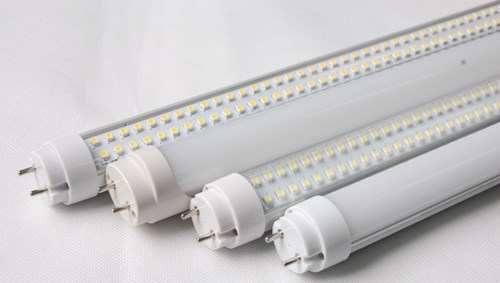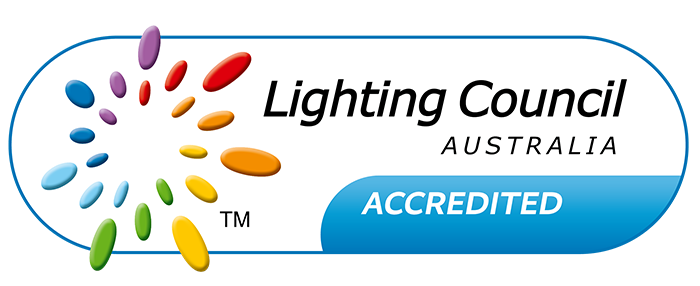Buyer beware - LED tube replacement risks you can't ignore

The recent extension of the Victorian Energy Saver Incentive (VEET) scheme’s commercial lighting upgrade operating hours (Schedule 34) has seen an explosion of direct selling of LED tubes, in some cases for free with the installer claiming the VEEC rebates.
We have outlined the major risks below to allow building managers & owners to be in a better position to compare lighting upgrade options. In order to minimise these risks, a FULL luminaire replacement with either an LED batten, bulkhead, troffer or panel is recommended.
A recent acknowledgement of these risks is the decision by the NSW Energy Savings Scheme administrators, IPART, to ban T5 adaptor retrofit kits and LED tube replacements as eligible activities due to the potential hazards arising out of such retrofit installations.
-
Product Safety & Compliance Risks
-
Safety Testing & Certification of non-emergency luminaires
Every luminaire sold in Australia must undergo AS/NZS 60598 or equivalent testing, which covers its classification, marking, mechanical construction & electrical construction. In addition, the NSW, SA & Victorian energy efficiency rebate schemes require an additional Australian Certificate of Suitability / Approval as an added safety feature. This is not a mandatory requirement for product sales, but rather a requirement to participate in the rebate schemes.
Any luminaire that is modified will have altered electrical, mechanical & thermal characteristics. This modified luminaire should therefore be re-certified under AS/NZS 60598 to ensure the safety of the fittings for potential electrical shock, fire or mechanical integrity risk management.
-
Safety Testing & Certification of emergency luminaires:
In addition to the above, emergency luminaires need to undergo mandatory AS 2293.3 testing to gain the thermal characteristics & photometric classification of the fitting. This basically tells us if the fitting is thermally capable to house all the components & operate within temperature limits of the battery, light source and control gear. Also, it gives a classification based on the light output, which enables us to decide how far apart the fittings can be spaced, so that in case of an emergency, safe egress of the occupants is facilitated.
If a T8 fluorescent tube is replaced by an LED tube, will the newly modified or retrofitted luminaire perform under emergency conditions (i.e. loss of power) as intended? This is not determined during installation. In addition, the photometric classification of the modified or retrofitted luminaire, based on the emergency lumen output would definitely change. Does the scheme require a reassessment of the emergency luminaire spacings to reflect the new classification i.e. the distance required between emergency fittings to achieve compliant light outputs?
-
Electro Magnetic Compliance Issues
Although the tubes might be separately tested for EMC compliance, once they are put into luminaires with existing control gear, there’s typically NO NEW testing done on the modified luminaire. Safety & performance risks include higher electro-magnetic interference, possible harmonics and higher inrush currents due to changed electrical & electronics of the fitting. Just checking the power factor for modified luminaires doesn’t address the EMC, harmonics & inrush current issues.
Moreover, existing fittings can have a variety of electronic/magnetic ballasts or power factor correction capacitors. Compatibility issues can cause an INCREASED power consumption, tripping of circuits and additional loads.
-
Installation Safety Issues
It is quite possible that LED tubes are being retrofitted into very old fluorescent batten luminaires, which increases the risk of unsafe installations. For example, an average LED tube at 300 – 400 gm is three times heavier than a fluorescent tube at 100-150 gm. Modifying older fittings means possibly cracked or broken tombstones. Retrofitting heavier LED tubes can cause tubes to fall out of fittings. This poses a huge risk for bare battens (battens that do not have a wire cage or diffuser) that are commonplace in car parks & fire stairs.
-
-
Product Lifetime & Heat Management Issues
The thermal performance of the modified or retrofitted luminaire cannot be predicted as the fitting on site could range from a bare batten to a fully enclosed IP68 luminaire installed in different environments from a freezer room to outside sun facing building facade. LED lifetimes can reduce significantly if the heat is not constantly drawn away from the LEDs.
VEET’s latest product approval requirements are for an ISTMT test by a NATA accredited laboratory as per the IES LM-84-14 is not possible on a modified luminaire with LED tube replacements. No such test is required for “modified” or “retrofitted” luminaires. This unduly punishes luminaire manufacturers, who are required to spend significant time and money testing their products when individual tube sellers are not bound by any such requirements.
-
Photometric & Light Distribution Issues
A fluorescent tube emits lights from its entire 360° surface, whilst LED tubes only emit light across a 180° angle. Therefore, the photometric performance or light distribution can vary a lot from the originally intended fluorescent luminaire. For example a direct-indirect suspended fluorescent fitting used in office spaces can have disastrous lighting outcomes if fitted with LED tubes. More examples can be reflector fittings like office troffers, workshop battens etc.
Whilst the selling of LED tubes is a matter to be assessed by the relevant electrical safety regulatory bodies, enLighten Australia strongly believes that modifying or retrofitting fluorescent luminaires with LED tubes should not be encouraged and incentivised further by state rebate schemes. We do not promote retrofitting existing luminaires with new lamps & control gears, as the fittings were not initially designed for these new components for the many reasons listed above.
Source: enLighten Australia Consultation Submission - Proposed Changes to Administration of Commercial Lighting Activities, VEET Scheme, March 2016.
For further information:
Technical Articles
Help us tailor your experience
We’d love to better understand who’s visiting. This isn’t data collection, just a quick way to help us design a better site for you.






